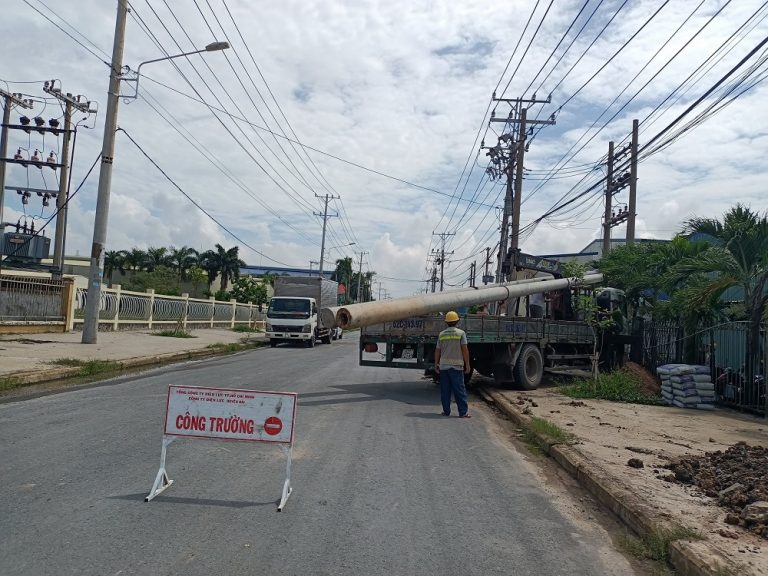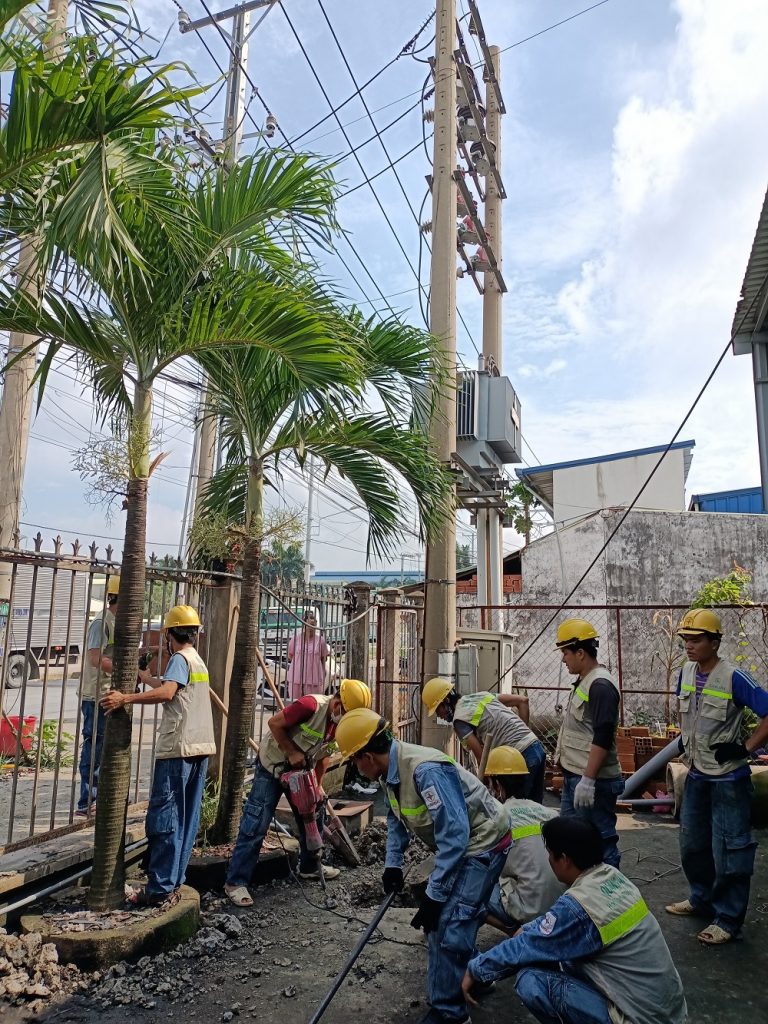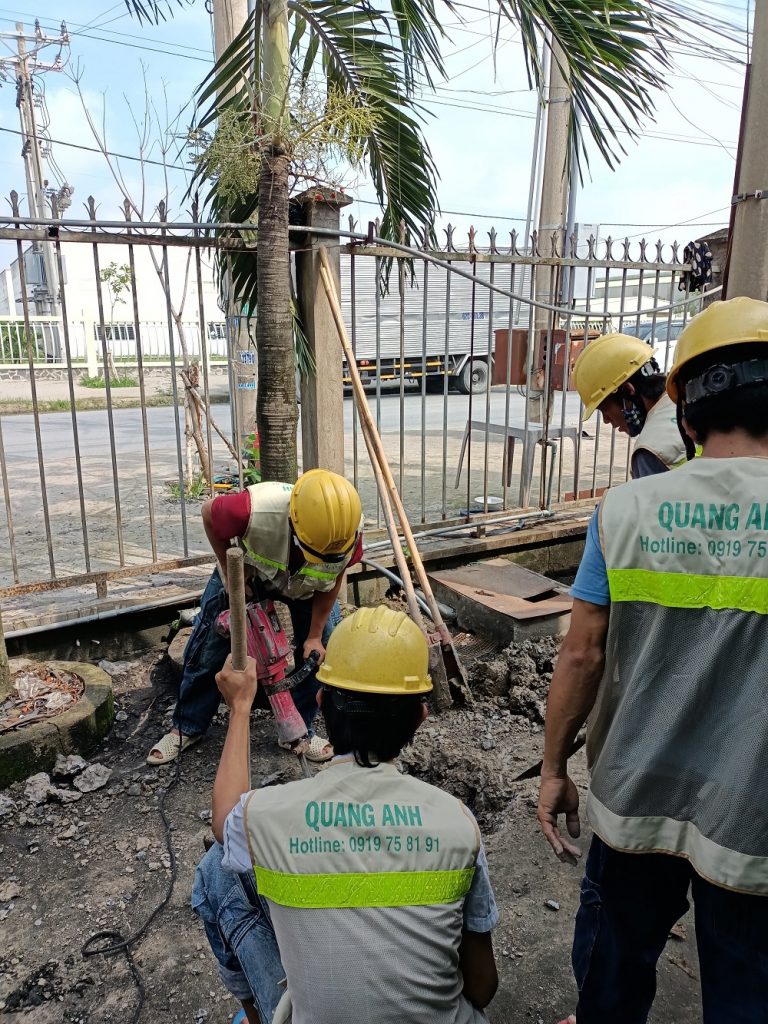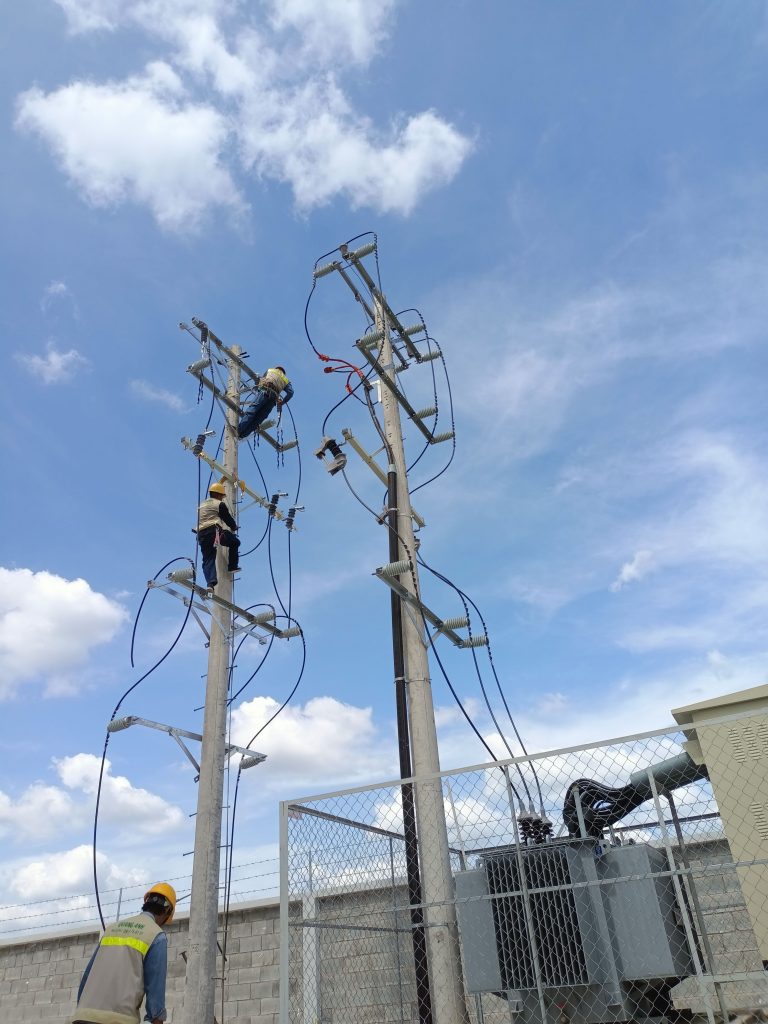The industrial electrical cabinet installation service plays a crucial role in ensuring the efficient and safe operation of industrial electrical systems.
Functions of Industrial Electrical Cabinets
Industrial electrical cabinets function as controllers, distributors of electricity, and protect electrical equipment from external influences such as dust and water. They house electrical devices like circuit breakers, push buttons, relays, contactors, and transformers, aiding in the effective management of complex electrical systems.
Industrial electrical cabinets are indispensable components in the electrical systems of factories, industrial zones, and large edifices. To ensure safe and continuous operation, utilizing an industrial electrical cabinet installation service is essential.
Main Functions of Industrial Electrical Cabinets
- Electricity Distribution and Control
Industrial electrical cabinets solve the task of distributing electricity to devices and machinery, ensuring the power supply is always stable and safe. Additionally, they provide the necessary isolation to protect users from electrical hazards. - Protection of Electrical Equipment
Equipped with devices like automatic breakers and thermal relays, the cabinets protect electrical equipment from overload, overheating, and short circuits, providing an extra protection layer for both equipment and users. - System Monitoring and Adjustment
Integrated monitoring and adjustment capabilities, with measuring devices, help oversee and regulate pressure, current, and temperature within electrical systems.
Structure and Components of Industrial Electrical Cabinets
- Shelter and Internal Parts: The cabinet shell is metal-made with appropriate sizes and thicknesses for specific requirements. Inside, there are components like circuit breakers, relays, push buttons, and PLC.
- Main Components: Including automatic circuit breakers MCCB, MCB, ACB, contactors, electrical switches, and indicator lights.
Classification of Industrial Electrical Cabinets
- Control Panel Cabinets: Operate based on the PLC controller, commonly used in automated production lines.
- Distribution Cabinets: Used to distribute electricity throughout the system, ensuring safety and efficiency in power transmission.
- Protective Cabinets: Provide a solid barrier, protecting electrical equipment from occurrences like short circuit and overload.
Searching for and utilizing high-quality industrial electrical cabinet installation services is crucial for factories and industrial zones to maintain stable, safe, and optimal operation.

Process of Installing Industrial Electrical Cabinets
The process includes steps: consulting and surveying needs, designing electrical diagrams, quoting and listing materials, performing installation, operational guidance, and providing after-sales service. This ensures industrial electrical cabinets are installed efficiently and safely.
Industrial Electrical Cabinet Installation Process
In an industrial setting, the industrial electrical cabinet installation requires professionalism and high technique to ensure electrical systems operate stably and safely. Below is a detailed description of the steps in this process:
- Specific Installation Planning
- Calculating Technical Parameters: Determine the required current and power based on system needs.
- Selecting Suitable Equipment: Choosing industrial electrical devices that align with needs and investment costs.
- Drawing Industrial Electrical Cabinet Diagrams
- Logical and Optimized Layout: Create industrial electrical diagrams ensuring necessary functions, easy maintenance, and cost-optimized equipment.
- Preparing Materials and Equipment
- Cabinet and Equipment: Prepare components like the cabinet frame, cutting devices like MCB, MCCB, and the necessary measuring tools.
- Installing the Electrical Cabinet Frame
- Selecting a Suitable Location: Fix the electrical cabinet frame at a place away from moisture and impact.
- Installing Equipment onto the Cabinet
- Reasonable Arrangement: Place the main circuit breaker in an easily operable position and arrange other devices like contactors, relays, meters, and indicator lights in an easy-to-maintain logical order.
- Connecting Electrical Devices
- Wiring According to Diagrams: Connect according to the diagrams, ensuring clear cable identification by color and proper insulated wire wrapping.
- System Checking: Check the system before powering it on to avoid incidents.
- System Testing and Trial Run
- Ensure Safety: A comprehensive inspection to ensure safety and technical standards are met.
- Completing and Labeling
- Device Labeling: Note the name and function of each device to assist in usage and maintenance processes.
Points to Note
- Safety: Always focus on ensuring safety throughout the installation and operation process.
- Aesthetic Appeal: Design and arrange industrial electrical cabinets neatly and visibly.
A professional industrial electrical cabinet installation service not only ensures a safe working environment but also optimizes your electrical system operation.
Common Types of Electrical Cabinets
Common electrical cabinet types include distribution electrical cabinets used for distributing power to large loads, automatic power transfer switch cabinets (ATS), motor control cabinets, and solar energy cabinets used in solar energy systems.
Electrical cabinets play a crucial role in protecting and managing electrical devices within systems. Below are common classifications of electrical cabinets, deployed based on voltage, function, and application field.
Classification by Voltage:
- High Voltage Cabinets: For transmitting and distributing electricity at high voltage levels, typically used in large substations.
- Medium Voltage Cabinets: Meet the distribution needs to larger-scale areas.
- Low Voltage Cabinets: Very common in industrial and residential applications, specialized in distributing power to nearby daily consumption devices.
Classification by Function:
- Distribution Panel (DB/MSB):
- Main Switchboard (MSB): Provides electricity for large and critical loads within the system.
- Distribution Board (DB): Provides electricity to smaller loads, flexible in power distribution.
- Motor Control Center (MCC): Commonly used in industrial applications to control and protect motors or equipment.
- Power Panel: Used for high-power equipment.
Classification by Application Field:
- Industrial Electrical Cabinets: Specifically designed for factories and enterprises with high power demand.
- Residential Electrical Cabinets: Serve buildings and households.
Common Industrial Electrical Cabinet Types:
- Motor Control Center (MCC): Integrates motor control and protection in heavy industrial environments.
- Automatic Transfer Switch (ATS): Ensures automatic power source switching, maintaining stability for systems demanding continuous power supply.
- Fire Fighting Electrical Cabinets: Support in controlling fire pump systems, integrated to ensure fire safety.
- Metering Electrical Cabinets: Specialized for measuring electrical energy, typically found at substations.
- Synchronization Cabinets: Unify the operation of independent power sources.
Other Electrical Cabinet Types:
- Compensation Capacitor Cabinets: Provide reactive power compensation, improving the electrical system’s efficiency.
- Temporary Power Supply Cabinets (Sockets): Designed for projects or equipment needing short-term power supply.
Installing industrial electrical cabinets requires precision and high reliability from professional teams in the industrial electrical cabinet installation service, ensuring stable and safe operation across different environments.

Technical and Safety Requirements
Electrical cabinets must ensure durability, environmental resistance, and electrical safety. Cabinet shells are usually made of steel, galvanized steel, or composite and coated with electrostatic paint. Cabinets may be designed water and dust resistant depending on the installation location.
Technical Requirements for Electrical System Installation
In designing and installing electrical systems, adhering to technical standards is a prerequisite condition to ensure electrical safety and system efficiency. Some important technical requirements include:
- Electrical System Design and Installation:
- Industrial electrical cabinets must be designed following national technical standards, ensuring full functionality and maximum safety.
- Protection devices like breakers, circuit breakers must be equipped to prevent incidents like electric shock and short circuits.
- Periodic inspections should be conducted to detect and remedy faults promptly.
Technical Requirements in Construction
Adhering to technical standards forms the foundation for safe and effective construction activities. Key points include:
- Safety Standards:
- According to national technical standards QCVN 18:2014/BXD, all construction activities must have full design documentation and construction organization planning before commencing.
- Safety Requirements:
- Workers must be thoroughly trained in safety and fully equipped with personal protective equipment.
- Construction sites need lightning protection systems and safety measures for working at heights.
Technical Requirements in Manufacturing
To ensure safety in manufacturing activities, attention should be paid to potential hazardous elements such as:
- Hazardous Elements:
- Mechanical, electrical, thermal, chemical, biological, and radioactive impacts can pose significant risks if not tightly managed.
- Safety Measures:
- Implement necessary safety structures and tools, ensuring periodic safety training for employees.
Requirement Engineering
The requirement engineering process is a crucial stage to ensure the system or software meets the usage goals well:
- Identify and Document Requirements:
- Document detailed user-end requirements, ensuring they are clear and understandable.
- Requirements Management and Analysis:
- Effectively manage, analyze, and prioritize requirements.
- Verification and Validation:
- Ensure the system throughout development stages consistently meets quality standards through validation activities.
Strictly executing technical and safety requirements in all aspects is indispensable to optimize the product’s quality and safety, while protecting businesses from potential risks.

After-Sales Service in Electrical Engineering
Reputable providers often offer warranties, on-site repair services, and long-term technical support, ensuring the electrical system always operates efficiently.
Overview of After-Sales Services
After-sales service is crucial in enhancing customer experience and maintaining loyalty. Especially in the electrical industry, industrial electrical cabinet installation services and related products require effective post-sale support to ensure stable operation.
Concept and Function
- Concept: After-sales service includes customer care activities post-purchase, such as technical support, warranty, electrical maintenance, and guaranteed repair. These are factors that help maintain a long-term relationship between customers and brands.
- Main Function: Provide a solid foundation for customers to be completely assured of service quality, thus increasing loyalty and improving customer experience.
Common Types of After-Sales Services
- Warranty and Maintenance: Ensure that cabinets and components are periodically maintained to reduce failure chances.
- Technical Support: Provide consulting solutions and promptly address technical issues to maintain electrical infrastructure.
- User Training: Organize courses to help customers handle basic errors independently, thereby optimizing product operation.
- Returns and Refunds: Flexible policies that give customers additional confidence in the provided products.
- Online Care: Use digital channels to support and solve queries promptly, thereby effectively conveying information.
Role of After-Sales Service
After-sales service not only improves trust but also promotes positive word of mouth. A good after-sales service encourages customers to share positive experiences with products and services. This is important for strengthening brand reputation.
Building an Effective After-Sales Strategy
- Identify Target Customers: Understand the target customers to design the most suitable services.
- Professional After-Sales Process: Establish specific and easy-to-implement procedures for maximum efficiency.
- Standardize and Automate: Apply technology to optimize customer care programs.
- Follow-up and Improve: Always listen to feedback to continuously improve after-sales service.
Organization Model of After-Sales
To carry out effective after-sales service, businesses might apply models such as:
- Authorized System: Entirely managed by the enterprise to ensure consistent quality.
- Combined System: Collaborate with other organizations to leverage expertise.
- Delegated System: Select credible partners to execute after-sales services.

Installing industrial electrical cabinets not only ensures the safety and stability of the electrical system but also optimizes operational costs. With professional service, this helps minimize risks and ensures high performance for businesses.
Contact QuangAnhcons at hotline: 09 1975 8191 for the best advice and industrial electrical cabinet installation service.
QuangAnhcons provides industrial electrical cabinet installation services ensuring high quality and safety with a team of experienced technicians and reputable after-sales services.